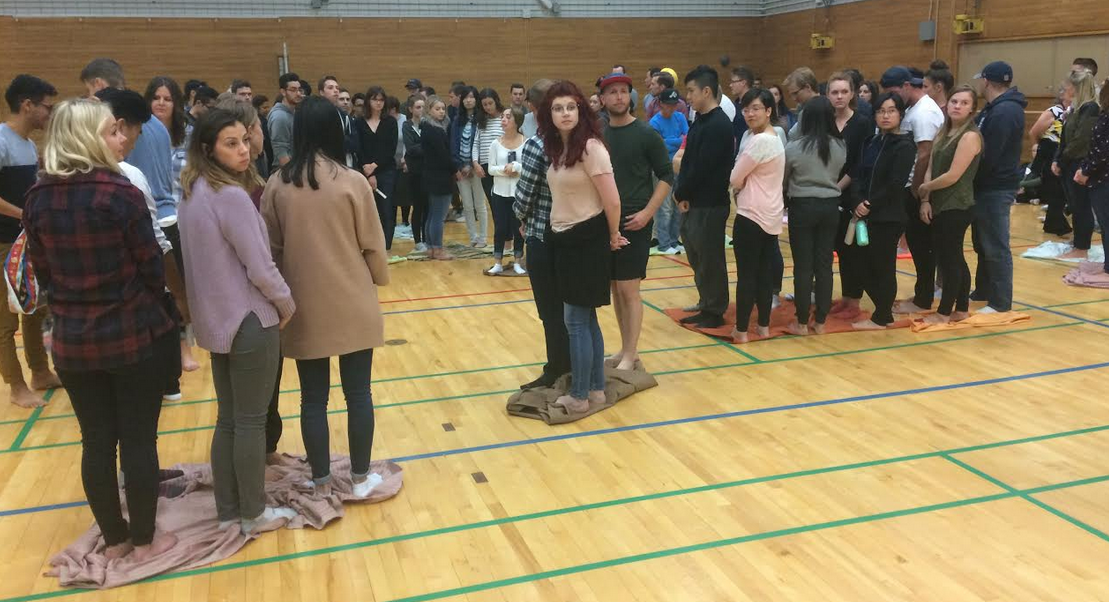
UAlberta Law 1L students occupy continually shrinking blanket space symbolizing Indigenous land as part of KAIROS Blanket Exercise on September 12, 2017.
Tuesday, September 12 saw the University of Alberta Faculty of Law's compulsory first-year Foundations of Law course draw to an emotional close with the KAIROS Blanket Exercise.
The exercise, introduced to the Foundations course last year as part of a series of curriculum changes aimed at bolstering teaching of Indigenous law, culture and history, condenses five centuries of post-European history into two hours and vividly depicts the process by which Canada's first peoples were systematically marginalized and stripped of their sovereignty.
UAlberta Law Dean Paul Paton emphasized the importance of a thorough knowledge of this history in his opening remarks.
"As future Canadian lawyers, it is important that you learn about the history of Indigenous peoples in Canada, and that you know how the law has formed and shaped our history. You will be encountering these issues in whatever aspect of the law in which you choose to practice," he said.
The exercise, developed by the non-denominational church consortium KAIROS, is powerful in its simplicity. A large group of participants - in this case the entire 1L class - is instructed to stand on a large area covered by small blankets. As the narrator guides the group through Indigenous history, the facilitators slowly remove blankets from the area representing Indigenous land, which symbolizes colonial encroachment.
Meanwhile, the narrator periodically instructs people to step off the carpeted area to represent both the literal and figurative loss of life due to smallpox, TB and other epidemics, murders of Indigenous women (and over-incarceration of Indigenous men), removal of children from their parents through the Indian Residential School system and other historical events.
Exercise narrator Jodi Stonehouse asserted that if the students felt uncomfortable in the midst of the exercise, this was indeed the intent.
"You should be feeling uncomfortable this morning," she said.
"We should feel uncomfortable about a group of our fellow Canadians having to boil water to brush their teeth, or having its menfolk incarcerated at a disproportionate rate, or its womenfolk being raped and murdered, and not having access to good education. We should all feel deeply uncomfortable about all this."
After the exercise was completed, the students gathered in small groups to discuss what they had learned through the exercise, and what they felt they could personally contribute to achieving reconciliation.
Many of the students expressed how impactful they found the visual representation of this historical narrative.
"I think we've all heard at least some of this history before, but seeing it represented like this and being able to physically interact with it was extremely powerful," said 1L student Daisy Feehan.
"My takeaway from this was a desire to educate myself more thoroughly on the subject and to hold myself and others around me accountable for their ignorance. If I don't stand up and say something when I hear people making ignorance and bigoted remarks about Indigenous people, then I'm de facto guilty of propagating this ignorance. By educating myself further, I'm better able to educate others."